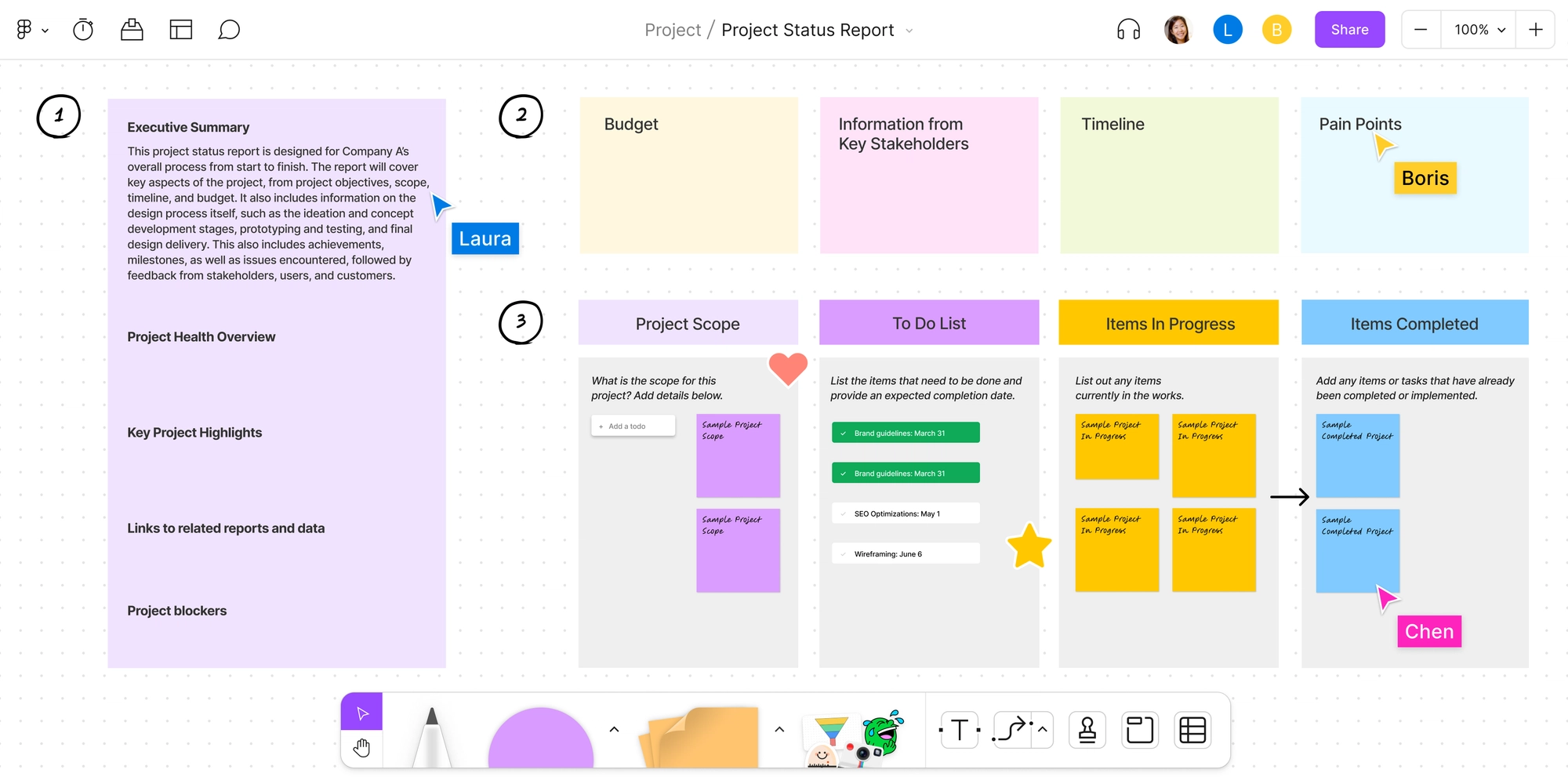What is a project status report?
Whether you’re developing a new product, launching a marketing campaign, or redesigning a website, your company’s success hinges on keeping your project on track. Project status reports can provide you and your team regular snapshots of project progress, including timelines, costs, work completed, and potential problems.
Read on to learn more about:
- The benefits of effective project status reporting
- How to write a project status report
- Good examples of project status reports
Benefits of effective project status reporting
Thorough project status reporting typically occurs on a weekly to monthly basis to help:

- Support clear communication, giving everyone involved a clear view of the project at all times
- Keep stakeholders accountable by identifying roles and responsibilities, down to the specific tasks and deadlines assigned
- Maintain control, letting stakeholders ensure milestones and quality levels are met
- Reduce risk by allowing teams to spot and address issues that could derail the project
- Improve performance, giving teams documented project steps they can learn from and improve upon
Fire up the collaboration engine with this free project status report template.
What does a project status report include?
A project status report commonly includes:
- General information such as project name, project manager contact information, reporting structure, and selected workflows and templates
- Executive summary briefly conveying essential details such as objectives, goals, progress, setbacks, and risks. FigJam has an executive summary template to help you build one.
- Project health overview, which gauges whether your project is on track, delayed, or needs improvement. Try the FigJam Kaizen template to monitor project status.
- Key project highlights providing additional details on completed and scheduled tasks, deliverables, and milestones
- Links to related reports and data such as resource management details, risk management data, progress metrics and KPIs, and a complete project timeline
- Project blockers, which could slow or stop progress. FigJam’s gap analysis makes it easy to measure current project performance against project expectations.
How to write a project status report in 5 steps
Not sure how to create a project status report? You can write one in five steps:
- List out everything the report should include. See the sidebar to jumpstart this list.
- Collect essential information. Using the list you just made, gather all the data you’ll need to make sure you’ve got a good handle on budget, timing, and other key details. Reach out to key stakeholders to confirm you aren’t missing anything.
- Choose a status report template. Figma has a project status report template that can help you record and reflect important project details.
- Build an outline. Based on the template you’ve chosen, start organizing your data with an outline. This will help you decide which sections in the report are most relevant for your project’s success.
- Write your status report, then edit it. Fill out your template based on the data you’ve gathered. Include links to supporting materials to provide context as needed. After you’ve finished a first pass, go back and edit your report for accuracy and clarity.
5 tips for better project status reporting
Target your audience. What and how much detail you include in your project status report will depend on who you’re sharing it with. Your executive team will expect a high-level summary of project progress mapped against key business metrics. Your design or development team may need more intel around tasks and deadlines to help them get work done.
Keep it short and simple. Use language that’s easy to understand. Limit your project status report to one page, including need-to-know information only.
Show progress and accomplishments. Is your project not going as planned? Flag this issue in your report as an action item to address. On the flip side, highlight any big wins to motivate your team to keep moving forward.
Go for visual appeal. A well-formatted, visually engaging status report is easier to scan, read, and understand. Colors, fonts, and icons help guide your users through the report.
Make it easily accessible. Share your project status report in a weekly or bi-weekly status meeting. Then agree with your team on the most convenient way to access it, whether via email, instant message, or an online collaboration tool such as FigJam.
Build an effective project status report with FigJam
Head to FigJam’s online collaborative whiteboard to start brainstorming and sharing ideas for your project status report. Or try one of our ready-made brainstorming templates to:
- Get input from key stakeholders for 24 hours with no login required.
- Let teams express themselves by adding emojis, images, and links to key data.
- Share assets between Figma and FigJam that will help you build your status report.
Check out FigJam’s tips on how to make the most of your brainstorm and feedback sessions. Once you’re done brainstorming, you can use FigJam’s free project status report template to build your report.
Sources


